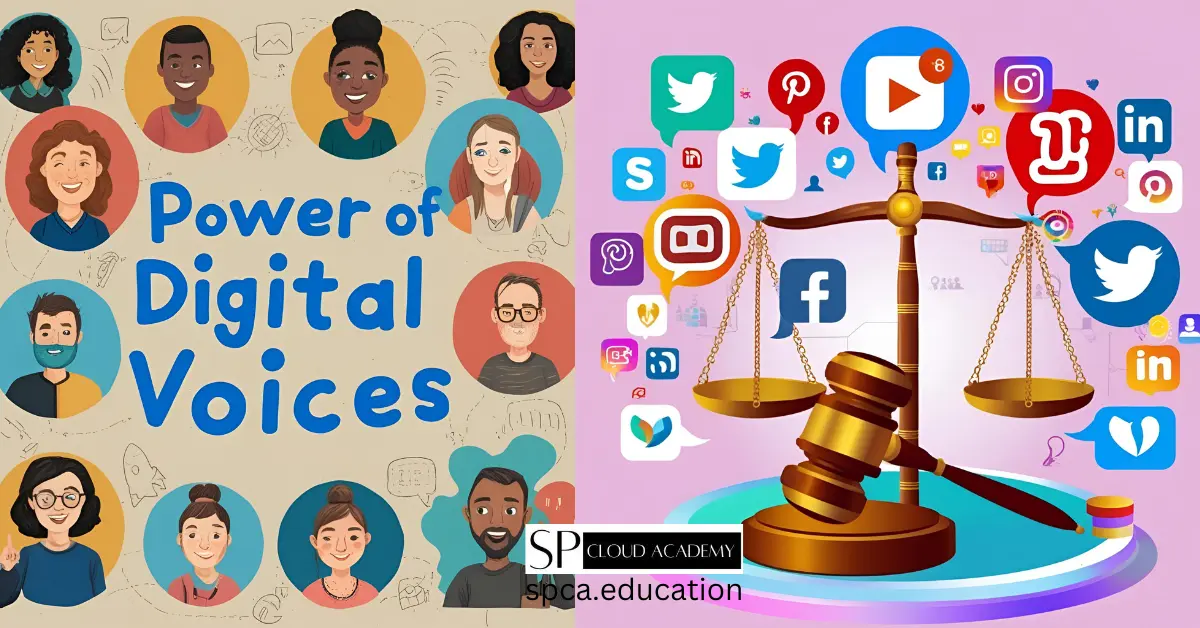Introduction: Why Brainstorming Matters More Than Ever
In today’s fast-paced world, the ability to generate and refine ideas separates successful individuals and organizations from the rest. Brainstorming isn’t just about throwing random thoughts at a wall to see what sticks—it’s a strategic process that can transform vague concepts into actionable plans worth their weight in gold.
Whether you’re an entrepreneur launching a startup, a marketer crafting your next campaign, or a student tackling a complex project, effective brainstorming techniques can unlock your creative potential. The challenge many face isn’t a lack of ideas but rather the inability to harness them productively.
This comprehensive guide will walk you through proven brainstorming methods, help you avoid common pitfalls, and provide practical strategies to evaluate and execute your ideas. You’ll learn how to create an environment where creativity thrives, how to break through mental blocks, and most importantly, how to identify which ideas deserve your time and resources.
Great ideas don’t appear in a vacuum. They emerge from structured thinking, collaborative effort, and a willingness to explore possibilities without immediate judgment. By the end of this guide, you’ll have a toolkit of techniques that work for both solo sessions and team collaborations, ensuring that your next brainstorming session yields results that matter.
Understanding the Science Behind Creative Thinking
Creativity isn’t magic—it’s a cognitive process that scientists have studied extensively. When you brainstorm, your brain enters a state where the prefrontal cortex becomes less inhibited, allowing for more free-flowing connections between seemingly unrelated concepts. This neural flexibility is what makes breakthrough ideas possible.
Research shows that our most creative moments often occur when we’re in a relaxed but alert state. This is why many people report having their best ideas in the shower, during walks, or right before falling asleep. During these moments, the brain’s default mode network activates, allowing subconscious processing to bring disparate ideas together.
The creative process involves two distinct modes of thinking: divergent and convergent. Divergent thinking is expansive—it’s about generating multiple possibilities without constraints. Convergent thinking, on the other hand, is evaluative—it focuses on analyzing options and selecting the best path forward. Effective brainstorming requires both modes, but they shouldn’t happen simultaneously.
Neuroscientists have discovered that stress and fear of judgment significantly inhibit creative thinking. When your amygdala detects threat—even social threats like criticism—it limits your brain’s ability to make novel connections. This explains why creating a psychologically safe environment is crucial for productive brainstorming sessions.
Understanding these mental processes helps you structure your brainstorming efforts more effectively. By working with your brain’s natural rhythms rather than against them, you can consistently tap into deeper levels of creativity and innovation.
Preparing Your Mind and Environment for Success
Great brainstorming doesn’t happen by accident—it requires intentional preparation. Before diving into idea generation, take time to prime your mental and physical environment for optimal creative output. The right setup can dramatically increase both the quantity and quality of ideas you produce.
Start by clearing mental clutter. If your mind is preoccupied with unfinished tasks or worries, it won’t have the bandwidth for creative thinking. Spend five minutes doing a brain dump—write down everything that’s on your mind, then set it aside. This simple act frees up cognitive resources for the work ahead.
Your physical environment matters more than you might think. Choose a space with natural light if possible, as studies show it enhances mood and cognitive function. Ensure the temperature is comfortable—rooms that are too cold or too hot distract from mental focus. Some people thrive in complete silence, while others benefit from ambient background noise or instrumental music.
Gather your tools before starting. Whether you prefer whiteboards, sticky notes, digital apps, or old-fashioned notebooks, have everything within reach. The last thing you want is to interrupt your creative flow searching for supplies. Consider having visual stimuli nearby—art, magazines, or objects related to your topic can spark unexpected connections.
Set clear time boundaries. Paradoxically, constraints boost creativity. Knowing you have exactly 30 or 60 minutes creates productive pressure that focuses your thinking. Finally, eliminate distractions—silence your phone, close unnecessary browser tabs, and inform others you’re not to be disturbed.
The Classic Brainstorming Method: Foundations and Best Practices
The traditional brainstorming technique, developed by advertising executive Alex Osborn in the 1940s, remains relevant because its core principles address fundamental creative challenges. Understanding these foundations ensures you’re building on solid ground before exploring more advanced methods.
The golden rule of classic brainstorming is simple: defer judgment. During the idea-generation phase, every suggestion is welcome, no matter how wild or impractical it seems. Criticism—even self-criticism—comes later. This separation of creation and evaluation prevents good ideas from being prematurely dismissed and encourages participants to take creative risks.
Quantity breeds quality. Osborn discovered that groups producing more ideas were more likely to develop truly innovative solutions. Your first ideas tend to be obvious or conventional—it’s often the twentieth or thirtieth suggestion that breaks new ground. Push past the point where ideas come easily.
Build on others’ contributions. The phrase “yes, and…” borrowed from improv comedy, perfectly captures this principle. When someone shares an idea, look for ways to extend, modify, or combine it with other suggestions. This collaborative approach generates hybrid solutions that no single person would have conceived alone.
Go for wild ideas. Outrageous suggestions can be tamed later, but conservative thinking rarely becomes revolutionary. Unusual ideas also help break group members out of conventional thought patterns, opening pathways to more practical innovations. Even if a wild idea isn’t implemented directly, it might inspire something viable.
Mind Mapping: Visualizing Connections Between Ideas
Mind mapping transforms abstract thinking into visual networks, making it easier to see relationships between concepts that might otherwise remain hidden. This technique, popularized by Tony Buzan, mirrors how your brain actually stores and retrieves information—through interconnected webs rather than linear lists.
Start with your central topic or problem in the middle of a blank page. Draw a circle or box around it—this becomes your anchor point. From there, create main branches representing major themes or categories related to your central idea. Use different colors for each branch to engage both hemispheres of your brain and improve memory retention.
Add sub-branches organically as related ideas emerge. Unlike traditional outlining, mind mapping doesn’t require hierarchy to be perfect from the start. You can draw connections between branches that aren’t directly linked, revealing unexpected relationships. These cross-connections often become the most valuable insights from your session.
Incorporate images, symbols, and keywords rather than complete sentences. Visual elements stimulate different neural pathways than text alone, enhancing both creativity and recall. A simple icon or doodle can convey meaning more efficiently than paragraphs of description, keeping your mind map scannable at a glance.
Digital mind mapping tools like MindMeister or XMind offer advantages for collaboration and revision, but many people find hand-drawn maps more engaging. The physical act of drawing activates motor memory and creates a more personal connection to your ideas. Experiment with both approaches to discover what works best for your thinking style.
The SCAMPER Technique: Systematic Innovation
SCAMPER provides a structured framework for innovation by asking specific questions that prompt you to look at existing products, services, or ideas from fresh angles. This acronym-based method is particularly useful when you need to improve something that already exists rather than creating from scratch.
Substitute asks what elements you could replace. Could different materials, processes, people, or components improve your concept? A restaurant might substitute plant-based proteins for meat, creating entirely new menu possibilities. Even seemingly minor substitutions can differentiate your offering in crowded markets.
Combine encourages you to merge two or more elements. What if you brought together features from different products or ideas? The smartphone resulted from combining cameras, music players, computers, and phones. Look for synergies that create value greater than the sum of individual parts.
Adapt questions how you might adjust your idea for different contexts. What works in other industries that you could apply here? Hospitals adapted manufacturing’s lean principles to reduce waste and improve patient care. Cross-industry adaptation often produces the most innovative breakthroughs.
Modify, Magnify, or Minify explores changes in size, shape, or attributes. What happens if you make something bigger, smaller, faster, slower, or more intense? Minimalism as a design philosophy came from asking what could be removed rather than added.
Put to other uses asks what new applications exist. Can your product serve different customers or solve different problems? Eliminate considers what’s unnecessary—often, removing features improves user experience. Reverse or Rearrange flips sequences or relationships, potentially revealing entirely new approaches.
Reverse Brainstorming: Problem-Solving Through Inversion
Sometimes the best way forward is to think backward. Reverse brainstorming flips the traditional approach by asking how you could cause the problem you’re trying to solve or achieve the opposite of your goal. This counterintuitive method helps identify obstacles you might otherwise overlook.
Begin by clearly stating your challenge in reverse. Instead of “How can we increase customer satisfaction?” ask “How could we make customers absolutely miserable?” The inversion removes psychological pressure to be constructive, paradoxically making people more creative and honest about potential failures.
Generate ideas freely about achieving this negative outcome. Encourage extreme suggestions—the more outrageous ways to fail, the better. This exercise often produces laughter, which reduces tension and creates psychological safety. People readily share failure scenarios they’d hesitate to mention as concerns in traditional brainstorming.
Once you’ve exhausted possibilities for failure, reverse each suggestion to find solutions. If one way to frustrate customers is “making them wait indefinitely without updates,” the solution becomes “provide real-time status information and clear timelines.” Many items on your list will directly address vulnerabilities in your current approach.
This technique excels at uncovering blind spots and assumptions. It forces you to confront uncomfortable truths about what could go wrong, allowing you to address weaknesses proactively rather than discovering them through failure. Organizations using reverse brainstorming often develop more robust plans that anticipate obstacles others miss.
The Six Thinking Hats Method: Structured Perspective-Taking
Edward de Bono’s Six Thinking Hats technique organizes brainstorming by assigning different modes of thinking to metaphorical colored hats. This structured approach ensures all perspectives receive attention while preventing the chaos that occurs when people argue from different viewpoints simultaneously.
White Hat thinking focuses purely on data and facts. When wearing this hat, you examine information objectively—what do you know, what do you need to know, and how will you get it? This grounding in reality provides the foundation for other thinking modes.
Red Hat gives permission for emotions and intuition without justification. How do you feel about this idea? What does your gut tell you? Legitimizing emotional responses prevents them from disrupting other thinking modes while ensuring feelings inform your decisions appropriately.
Black Hat represents critical judgment—what could go wrong, what are the risks, what doesn’t fit with experience or policy? While negativity gets bad press in brainstorming, structured criticism is essential for avoiding costly mistakes. The key is containing it to designated time rather than allowing it to dominate.
Yellow Hat offers the opposite—optimistic, positive thinking about benefits and value. What’s the best-case scenario? Why might this work? This mode helps balance Black Hat criticism and keeps the group motivated.
Green Hat focuses on creativity, alternatives, and new ideas—the traditional brainstorming mindset. Blue Hat manages the thinking process itself, organizing which hat to wear when and ensuring the session stays productive. Using these hats in sequence creates comprehensive analysis while minimizing conflict.
Brainwriting: Silent Collaboration for Introverts
Not everyone thrives in vocal brainstorming sessions. Introverts, non-native speakers, and those who process information internally often struggle to contribute in fast-paced group discussions. Brainwriting addresses these limitations by making idea generation a written, individual activity before collaboration begins.
The basic process is simple: participants write ideas silently on paper or digital documents rather than speaking them aloud. After a set time—typically three to five minutes—they pass their sheet to the next person, who reads the existing ideas and adds new ones, either building on what’s there or introducing fresh concepts.
This rotation continues for several rounds, resulting in sheets filled with diverse ideas that everyone has seen and built upon. The anonymity reduces social anxiety and eliminates concerns about status or hierarchy affecting whose ideas receive attention. Quiet team members often produce insights that would never surface in traditional sessions.
The 6-3-5 method is a popular variation: six people write three ideas each, rotating papers five times. In just thirty minutes, you generate up to 108 ideas—far more than typical vocal brainstorming produces. The structure creates productive pressure while the silence allows deeper thinking.
Digital tools like Google Docs or specialized platforms enable remote brainwriting, making it perfect for distributed teams. The written record also creates immediate documentation, eliminating the transcription phase needed after whiteboard sessions. For teams that haven’t achieved psychological safety or include personality diversity, brainwriting levels the playing field remarkably.
Role Storming: Perspective-Shifting for Breakthrough Ideas
Role storming asks participants to generate ideas from someone else’s perspective, temporarily shedding their own identity and constraints. This theatrical approach to brainstorming reduces self-censorship while encouraging radical thinking that might feel too risky from your own viewpoint.
Choose perspectives strategically based on your challenge. For product development, consider your customer’s perspective—what would they want? For process improvement, think like your CEO, your newest employee, or even your competitor. The more different the perspective from your own, the more it disrupts conventional thinking patterns.
Famous figures make excellent roles because everyone shares cultural knowledge about them. How would Steve Jobs approach this design problem? What would Oprah do to engage this audience? Using widely recognized personas helps participants quickly embody different thinking styles without extensive explanation.
You can also use fictional characters, archetypes, or even inanimate objects. How would a luxury brand solve this versus a discount retailer? What if your product were a person—how would it want to evolve? These abstract perspectives force unusual mental connections that generate surprising insights.
The psychological safety created by role-playing cannot be overstated. When people speak as someone else, they escape fear of judgment. Bad ideas come from the role, not the person, reducing emotional investment in any particular suggestion. This freedom allows exploration of controversial or unconventional territories that groups might otherwise avoid.
Starbursting: Question-Based Exploration
While most brainstorming techniques focus on generating answers, starbursting begins by generating questions. This approach is particularly valuable in the early stages of project development when you’re still defining the problem or opportunity. Questions reveal assumptions and knowledge gaps that must be addressed before solutions can be effective.
Draw a six-pointed star with your topic at the center. Each point represents a question word: Who, What, Where, When, Why, and How. Your goal is generating as many questions as possible for each category, not answering them immediately. This disciplined separation of questioning from answering prevents premature closure on incomplete understanding.
Who questions explore stakeholders: Who will use this? Who will resist? Who needs to approve? Who has solved similar problems? What examines details: What features are essential? What could go wrong? What resources are needed? Where considers location and context: Where will implementation occur? Where have others succeeded or failed?
When addresses timing: When should this launch? When do dependencies need completion? When will we evaluate success? Why digs into purpose and motivation: Why does this matter? Why haven’t others done it? Why might people resist? How investigates methods: How will it work? How will we measure results? How much will it cost?
The power of starbursting lies in exposing what you don’t know. Many projects fail not because they chose wrong answers but because they never asked the right questions. A comprehensive question list becomes your research agenda and planning checklist.
The Disney Method: Dream, Reality, and Criticism
Walt Disney’s creative process involved three distinct rooms representing different thinking modes: the Dreamer, the Realist, and the Critic. This physical separation of creative phases prevents them from interfering with each other while ensuring all perspectives receive full attention.
In the Dreamer room, anything is possible. Here you embrace wild visions without concern for feasibility, cost, or logistics. The question is simply: What would be amazing? What could delight people beyond their expectations? This phase taps into your most ambitious aspirations, the kind of thinking that creates transformative innovations rather than incremental improvements.
Move to the Realist room to ask how dreams become reality. This pragmatic phase considers resources, timelines, processes, and concrete steps. How do we actually build this? What skills do we need? The Realist doesn’t dismiss the dream but translates it into actionable plans, identifying what’s genuinely achievable with appropriate effort.
The Critic room provides constructive skepticism. What weaknesses exist in the plan? What could go wrong? What hasn’t been considered? Unlike destructive criticism that kills ideas prematurely, the Critic improves them by stress-testing assumptions and revealing vulnerabilities that can be addressed proactively.
Physical movement between rooms—or even just different chairs—helps your brain shift modes cleanly. The spatial anchoring makes it easier to fully inhabit each mindset without contamination from others. This technique works for individuals and groups, though it requires discipline to stay in the designated mode.
Rapid Ideation: Quantity Over Quality
Rapid ideation techniques prioritize speed and volume, operating on the principle that your subconscious knows more than your conscious mind admits. By generating ideas faster than your internal critic can evaluate them, you bypass the mental gatekeepers that normally limit creative output.
Set a timer for five to ten minutes and challenge yourself to write one idea every 30 seconds—or even faster. Don’t think deeply; write whatever comes to mind, no matter how incomplete or absurd. The time pressure short-circuits overthinking and perfectionism, forcing you to trust your intuition.
One effective variation is the “bad ideas brainstorm,” where you intentionally generate terrible solutions. This paradoxical approach removes performance anxiety completely while often producing genuinely good ideas disguised as bad ones. Even truly awful suggestions can inspire useful inversions or modifications.
Constraints boost rapid ideation effectiveness. Try generating ideas that all start with the same letter, cost exactly $100, take 10 minutes to implement, or involve a specific random object. These arbitrary limitations force your brain to make unexpected connections it would otherwise miss.
The real magic happens after the session. When you review your rapid ideation output with fresh eyes, patterns emerge and seemingly disconnected fragments combine into coherent possibilities. That throwaway half-thought might become the seed of your best idea once you give it proper attention.
Evaluating Ideas: From Brainstorm to Action Plan
Generating ideas is only half the battle—selecting which ones deserve resources separates productive brainstorming from mere creative exercise. Evaluation requires shifting from divergent to convergent thinking, from imagination to analysis. This transition must happen at the right time, after creative exploration is complete.
Create an evaluation matrix with criteria relevant to your specific situation. Common dimensions include feasibility, cost, potential impact, alignment with goals, time to implementation, and risk level. Rate each idea on these criteria using a simple scale—perhaps 1 to 5. This structured approach prevents the loudest voice or the boss’s preference from dominating decisions.
The impact-effort matrix provides quick visual clarity. Plot ideas on a grid with potential impact on one axis and required effort on the other. Ideas in the high-impact, low-effort quadrant are your “quick wins”—implement them immediately. High-impact, high-effort ideas become strategic projects requiring planning and resources.
Consider both logical and emotional factors. Will stakeholders embrace this idea? Does it excite your team? Enthusiasm matters because implementation requires sustained effort. An objectively superior idea that no one feels passionate about often fails against a good-enough idea that people love.
Test assumptions behind your top ideas. What would need to be true for this to succeed? Can you validate those assumptions quickly and cheaply? Small experiments de-risk decisions by providing real-world data before major resource commitments.
Prototyping and Testing Your Best Ideas
Ideas remain abstract until you make them tangible. Prototyping transforms concepts into experiences that reveal strengths, weaknesses, and unexpected opportunities. The prototype doesn’t need to be polished or complete—it just needs to be real enough to generate meaningful feedback.
For physical products, create rough mockups from cardboard, clay, or 3D-printed components. For services, script the customer journey and walk through it step-by-step. For software, build paper prototypes or clickable wireframes. The goal is investing minimal resources while learning maximum information about your idea’s viability.
Think aloud testing provides invaluable insights. Watch people interact with your prototype while they verbalize their thoughts. Where do they hesitate? What confuses them? What delights them? Their actual behavior often contradicts what they say in interviews, making observation far more reliable than surveys.
Iterate quickly based on feedback. The purpose of prototyping isn’t proving your idea is perfect—it’s discovering what needs to change. Each iteration should address specific learnings from the previous version. This cyclical process of build-test-learn accelerates toward solutions that genuinely meet needs.
Failed prototypes aren’t wasted effort; they’re tuition in the school of innovation. Each failure eliminates a wrong path and points toward better directions. Organizations that embrace rapid prototyping and tolerate early failures outperform those demanding certainty before action. The question isn’t whether to prototype but how quickly you can start.
Overcoming Creative Blocks and Mental Barriers
Every brainstormer encounters moments when ideas simply won’t flow. Understanding common blocks and having strategies to break through them ensures temporary obstacles don’t become permanent roadblocks. Often, the solution involves changing your approach rather than trying harder with the same method.
Analysis paralysis occurs when you overthink before acting. Combat it by giving yourself permission to generate incomplete ideas. Remember that refining happens later—right now, quantity matters more than quality. Set shorter time limits to create productive urgency that prevents endless deliberation.
Fear of judgment—both from others and yourself—is the creativity killer. Remember that all ideas sound weird initially. The airplane, the internet, and the smartphone all seemed absurd until they weren’t. Practice separating idea generation from evaluation; they require different mental states and should never happen simultaneously.
Functional fixedness locks you into seeing things only in their conventional uses. Break this by deliberately forcing unusual connections. Pick a random word from the dictionary and find ways to relate it to your problem. The arbitrary constraint creates unexpected mental pathways.
Mental exhaustion depletes creative capacity just like physical exhaustion depletes strength. If ideas aren’t flowing, step away. Go for a walk, do something physical, or work on an unrelated task. Your subconscious continues processing problems while your conscious mind rests, often delivering insights when you return refreshed.
Environmental monotony can also stifle creativity. Change your location—work in a café, park, or different room. Novel surroundings stimulate your brain and can trigger fresh perspectives.
Solo Brainstorming: When to Work Alone
Group brainstorming receives most attention, but solo sessions offer distinct advantages. Research shows that individuals often generate more ideas alone than in groups, free from social dynamics that can inhibit creative thinking. Understanding when to brainstorm solo versus collaboratively maximizes your creative output.
Solo brainstorming excels in the early exploration phase when ideas are half-formed and vulnerable to premature criticism. Working alone, you can pursue unconventional tangents without explaining yourself or managing others’ reactions. This freedom is particularly valuable for introverts and deep thinkers who need quiet for their best work.
The absence of groupthink allows genuine originality. In groups, early suggestions create anchors that influence subsequent ideas—everyone begins variations on the first theme. Solo work prevents this convergence, letting you explore diverse territories before external influences channel your thinking.
Schedule solo sessions strategically. Begin projects with individual brainstorming, bringing preliminary ideas to the group for building and refinement. This approach gives everyone time to think deeply before discussion begins. Similarly, after group sessions, schedule solo time to process discussions and develop personal insights.
Use voice recording for solo sessions if writing feels constraining. Speaking ideas aloud engages different neural pathways than writing and can feel more natural. You can transcribe later, but during generation, minimize friction between thought and capture.
The key is balancing solo and collaborative work. Use solitude for exploration and depth, collaboration for connection and momentum. Neither approach is universally superior—the best brainstormers use both strategically.
Collaborative Brainstorming: Making Group Sessions Productive
Group brainstorming harnesses collective intelligence, but poor facilitation can make it counterproductive. Effective collaborative sessions require clear structure, psychological safety, and techniques that ensure everyone contributes meaningfully rather than just the loudest voices dominating.
Establish ground rules explicitly at the session’s beginning. No criticism during idea generation. Build on others’ suggestions. Welcome wild ideas. One conversation at a time. These aren’t suggestions—they’re requirements for productive collaboration. Designate someone to gently enforce rules when conversation drifts.
Round-robin contribution ensures balanced participation. Go around the circle, giving each person a chance to add one idea. Anyone can pass, but everyone gets equal opportunity. This structure prevents extroverts from monopolizing discussion while giving introverts time to formulate thoughts.
Use silent start periods before discussion. Give everyone five minutes to write ideas individually before verbal sharing begins. This ensures fast talkers don’t anchor the group’s thinking and prevents good ideas from being lost because someone couldn’t get a word in.
Diverse groups produce better ideas than homogeneous ones, but only if you manage the resulting friction constructively. Different perspectives create both creative tension and potential conflict. Frame disagreement as exploration rather than confrontation—you’re searching for truth together, not competing.
Document everything visibly—on whiteboards, flip charts, or shared screens. This external memory allows participants to focus on thinking rather than remembering. It also ensures ideas from early in the session don’t disappear as new ones emerge.
Digital Tools and Apps for Modern Brainstorming
Technology has transformed brainstorming from a conference-room activity to something possible anywhere, anytime. Digital tools offer advantages like easy documentation, remote collaboration, and sophisticated organization that paper cannot match. However, they also introduce distractions and learning curves that can impede flow.
Miro and Mural provide infinite digital whiteboards where teams can collaborate visually in real-time or asynchronously. These platforms excel for mind mapping, affinity clustering, and visual workflows. Templates guide specific brainstorming methods, lowering the barrier to structured creativity.
Notion and Obsidian offer powerful knowledge management with bidirectional linking, letting you connect ideas across time and projects. These tools shine for individuals building a personal knowledge base where past brainstorming informs future work.
Voice-to-text tools like Otter.ai capture spoken brainstorming sessions, transcribing conversations for later analysis. This is particularly valuable for capturing group discussions without someone being stuck on note-taking duty, allowing full participation.
Randomizer tools inject serendipity into brainstorming. Websites that generate random words, images, or constraints can break mental ruts by forcing unexpected connections. The right amount of randomness stimulates creativity without creating chaos.
However, digital tools can also hinder creativity. Constant notifications destroy focus. Interface learning curves consume mental energy. Screen fatigue is real. The best approach often blends analog and digital—capture ideas on paper or whiteboards for tactile engagement, then digitize for organization and sharing. Choose tools that serve your creativity rather than complicating it.
Capturing and Organizing Ideas for Future Use
Even brilliant ideas become useless if you can’t find them when needed. An effective capture and organization system ensures brainstorming produces lasting value rather than temporary excitement. The system needn’t be complex—simplicity increases likelihood of consistent use.
Capture ideas immediately when they occur, regardless of context. Keep a notebook, use your phone’s voice recorder, or maintain a dedicated notes app. The specific tool matters less than having something always available. Ideas are fleeting; capturing them poorly beats losing them completely.
Create a central repository where captured ideas ultimately go. This might be a digital document, a physical notebook, or a specialized app. The key is having one place to look rather than scattered notes across multiple platforms. Periodically review your capture points and transfer everything to this central location.
Tag or categorize ideas by project, theme, or timeline. This organizational layer makes retrieval easier when you need inspiration later. However, don’t let organization become procrastination—it’s better to have a messy collection of 100 ideas than a perfectly organized collection of 10.
Schedule regular review sessions—perhaps monthly—to revisit your idea collection. Ideas that seemed marginal initially might become relevant as circumstances change. Cross-pollination happens when you review ideas across different projects, discovering connections that weren’t obvious at capture.
Share promising ideas with trusted colleagues or mentors. External perspectives help you evaluate which ideas deserve development. They might also see applications you hadn’t considered, or connect you with resources to accelerate implementation.
Learning from Failure: When Ideas Don’t Work Out
Not every idea succeeds, and that’s not just acceptable—it’s necessary. Organizations and individuals that never fail aren’t taking sufficient risks to achieve breakthrough innovations. The difference between productive and destructive failure lies in what you learn from the experience.
Conduct post-mortems on ideas that didn’t work, but frame them as learning sessions rather than blame exercises. What assumptions proved wrong? What did we underestimate? What unexpected obstacles emerged? Document these insights to avoid repeating mistakes.
Distinguish between execution failures and concept failures. Sometimes great ideas fail because of poor implementation, insufficient resources, or bad timing rather than fundamental flaws. These ideas might deserve another attempt under different circumstances. Conversely, some ideas are simply wrong—no amount of better execution will make them work.
Failure signals can prevent wasting resources on doomed ideas. Declining user engagement, consistently missed milestones, mounting costs without corresponding progress—these warning signs demand honest assessment. The sunk cost fallacy makes it tempting to continue investing in failing ideas, but cutting losses is often the wisest choice.
Celebrate intelligent failures publicly. When leaders share what they learned from unsuccessful experiments, they create psychological safety for others to take creative risks. Organizations that punish failure drive innovation underground or eliminate it entirely.
Some of history’s greatest successes emerged from failures. Post-it Notes came from a failed attempt to create super-strong adhesive. Penicillin was discovered when a contaminated petri dish ruined an experiment. Stay alert for unexpected value in your failures.
Building a Sustainable Brainstorming Practice
Occasional brainstorming bursts produce occasional results. Consistent creative output requires making brainstorming a regular practice rather than a special event. This doesn’t mean daily marathon sessions—sustainable practices are ones you can maintain long-term without burnout.
Schedule creativity time as seriously as you schedule meetings. Even 15 minutes daily adds up to more than seven hours monthly—time that compounds into significant creative output. Protect this time from other demands. Treat it as an appointment with yourself that cannot be cancelled.
Create rituals around brainstorming. Perhaps you always use the same mug for coffee during sessions, or always start with the same warmup exercise. These rituals signal to your brain that it’s time to think creatively, making it easier to enter the right mental state.
Vary your methods to prevent staleness. If you always mind map, try SCAMPER. If you typically brainstorm alone, organize a group session. Novelty itself stimulates creativity, so rotating techniques keeps the practice fresh and engages different cognitive strengths.
Build a personal creative routine based on when you think best. Some people are most creative early morning; others hit their stride late at night. Honor your natural rhythms rather than fighting them. Schedule important brainstorming when you’re typically at your mental peak.
Track your creative output and the conditions surrounding it. Which techniques generated the most valuable ideas? What time of day works best? Was solo or collaborative work more productive for this type of problem? Data reveals patterns that help you optimize your personal creative process.
Conclusion: Your Path from Ideas to Impact
Brainstorming is both an art and a science—a learnable skill that improves with practice and intention. The techniques in this guide provide a comprehensive toolkit, but remember that no single method works for everyone or every situation. Your task is experimenting to discover what resonates with your thinking style and challenges.
The journey from idea to impact requires more than just generation. You must evaluate ruthlessly, prototype rapidly, and persist through inevitable obstacles. Many people stop at the exciting idea stage, never doing the hard work of implementation. This is where most ideas die—not because they weren’t good enough, but because no one championed them through reality’s resistance.
Start small. Don’t attempt implementing every technique immediately. Choose one or two methods that appeal to you and practice them until they become second nature. Mastery of a few techniques beats superficial familiarity with many.
Remember that creativity is a muscle—it strengthens with use. Your first brainstorming sessions might feel awkward or unproductive. That’s normal. Persistence pays dividends. People who consistently generate valuable ideas aren’t necessarily more talented; they’ve simply practiced the skill more deliberately.
The world needs your ideas. Problems surround us—in business, society, relationships, and technology. Each one is an opportunity for someone with the right idea and the willingness to develop it. Armed with these brainstorming techniques, you’re equipped to be that person. Now the only question is: what will you create?
See Also
-

The Ultimate Guide to Brainstorming: How to Turn Any Idea into Gold
-

Equality or Equity? The Hidden Key to Truly Inclusive Classrooms
-

From Trend to Transformation: The Rise of Paradigm in Modern Life
-

AI vs. The Mind: The Ultimate Battle Between Machine and Thought
-

Make Money While You Sleep: The Ultimate Guide to AI-Powered Passive Income
-

Virtual Citizenship Explained: Are You Ready to Be a Digital Nation’s Citizen?
-

AI for Transparency: The Secret Weapon Behind Modern Good Governance
-

How Social Media is Revolutionizing Good Governance: The Power of Digital Voices
-

Moral Compass: Understanding the Rightness of a Cause in Modern Society